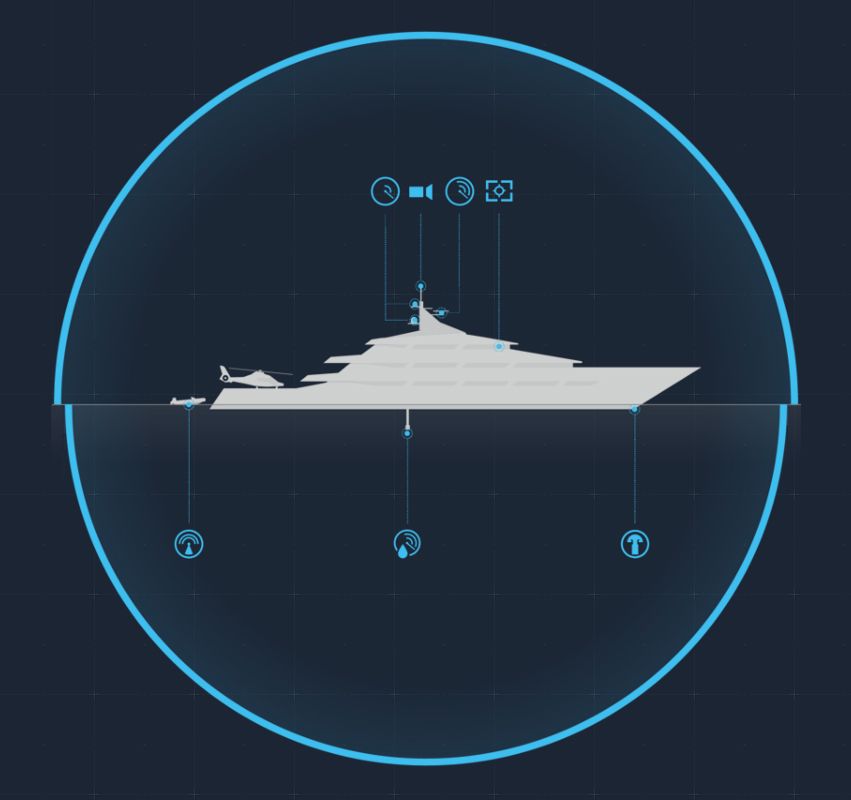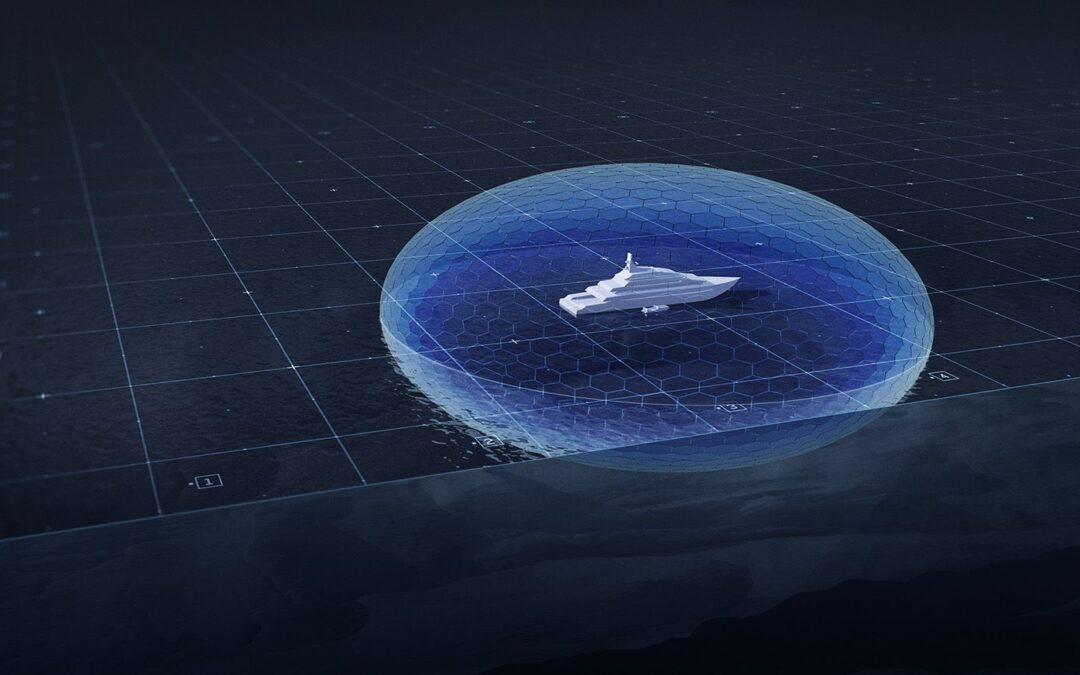As the saying goes ‘forewarned is forearmed’. Awareness of one’s own surroundings is arguably the most important part of any security system on land or afloat. Yacht security systems were traditionally focused onboard in the form of CCTV, pressure pads, access control and maintaining a good lookout. As a result, the first line of defence was essentially the hull, with potential threats only being detected once they were already onboard.

Advances in sensors, tracking devices and navigation equipment resulted in them being used for security purposes. Lack of integration between these standalone technologies, however, meant these systems were limited in evaluating real threats and were prone to false alarms. Furthermore, crew were required to analyse data from multiple sources which was both time consuming and risked delays in making critical decisions.
Thankfully technology is catching up, with modern security systems providing more intuitive and intelligent solutions to help busy crew and security, conscious owners.

What are superyacht security needs?
Awareness of a yacht’s own tenders, toys and guests, as well as the proximity of unknown objects that may pose a threat are key aspects of yacht security. An effective security system will depend on numerous factors such as yacht size and location, but most importantly the profile and requirements of the owner that will differ from yacht to yacht.
That said, common themes do occur when discussing yacht security. Crew are likely to be busy so systems must be easy to use with users being alerted to relevant information, namely an immediate threat to safety, security or privacy. As such, systems must be intelligent and able to seamlessly link together different sensor data, analyse that combined information and present a clear security picture to aid decision making.
What’s out there?
Objects around a yacht fit into three distinct categories: air, surface and underwater. These can also be classified as ‘known’ and ‘unknown’, or distinguished as Blue and Red forces in military terminology.
Known air, surface and underwater assets can include: helicopters, drones, tenders, personal watercraft, seabobs, divers and submarines. However, all of the above could also pose a potential threat as unknown objects approaching a yacht.
The development of blue force trackers for tenders, toys and even humans has improved the ability of a crew or security teams to monitor and track the location of a yacht’s own assets, crew and guests. Technology has also enabled advances in the way that unknown objects can be detected, tracked, classified and even deterred.
How can technology help
Products like the MARSS’s NiDAR security shield achieve 360 situational awareness around a yacht by integrating different hardware and data feeds into a single system – able to automatically detect, classify, track and alert users to multiple air, surface and underwater objects.
Above the water, approaching objects are detected using radar as the primary sensor, linked with long-range cameras and other sensors for confirmation. Underwater diver-detection and navigation sonars are used to identify approaching divers or submersibles.
Detection is just one element. It is the merging of data, analysis and tracking of objects using advanced software algorithms where the real power of technology lies. These algorithms can automatically classify objects based on factors such as size, shape, speed and moving patterns and rank them accordingly.
An awareness picture is then presented on an intuitive ‘command & control’ interface giving the operator a complete view of their surroundings, with live tracks and video feeds overlaid on a map or satellite view. Large touch-screen displays on the bridge or in an onboard security room and portable tablets provide access around the yacht, while security teams located ashore can access the system remotely.
Awareness on the move
In addition, augmented reality has made it possible for layers of relevant awareness information to be presented over a user’s field of view using the latest smart glasses and head mounted displays.
This ‘augmented security’ enables crew to access and control real-time security information whilst mobile, for example when on passarelle watch, underway in a tender or monitoring guests swimming and using water toys.
In summary
Advances in technology mean that yacht security is no longer limited to onboard as comprehensive 360 degree ‘offboard’ systems deliver increased awareness. When combined with simplified control systems and mobile access for crew, potential threats can be detected earlier and known assets tracked in real time with more accuracy and ease.
In 2017, watertight security on superyachts is now a reality.

